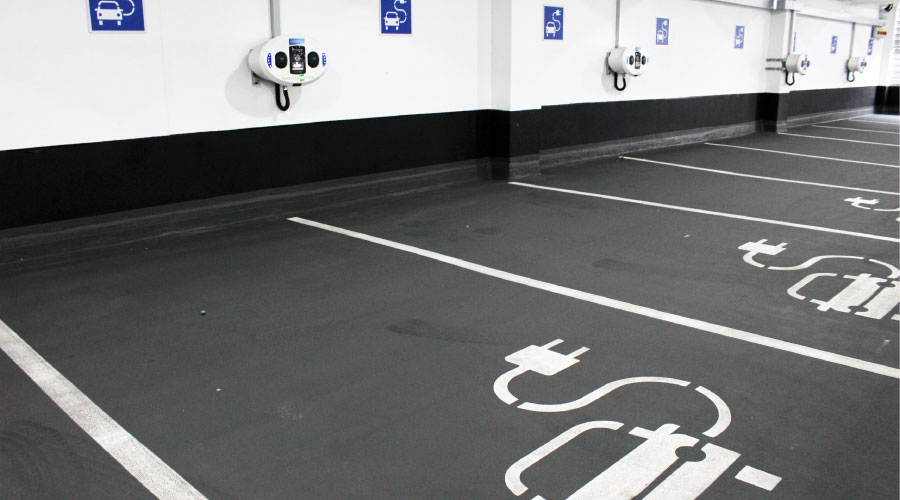Defining High-Performance Buildings
A report to Congress aims to create formal definitions and metrics for high-performance buildings. But energy remains a sticking point
When facility executives play word association, the terms “measurement and verification” and “energy” go together like peanut butter and jelly. But not everyone in the design and construction industry sees it that way. For example, when the National Institute of Building Sciences (NIBS) sent a report on high-performance buildings to Congress last month, it suggested a new, expansive definition of what a high-performance building should be, and called for improved metrics and verification methods in a host of areas to help the industry better meet the definition. But measuring and verifying energy use wasn’t on the list.
Published by the High-Performance Building Council, which is part of NIBS, the report doesn’t issue any specific energy recommendations, even though it was fueled by a paragraph in the sprawling 551-page Energy Policy Act (EPAct) of 2005.
“High performance needs to be all inclusive. We can’t improve buildings unless we can measure them,” says Earle Kennett, vice president of NIBS. “We need to decide as an industry what the performance metrics are for a high-performance building.”
So energy doesn’t get first billing. Instead, the report breaks up the attributes of a high-performance building into eight areas: cost effectiveness, safety and security, sustainability, accessibility, functionality, productivity, historical preservation and aesthetics. The report later singles out which areas need further development.
“We wanted to take things from a holistic viewpoint, and not just look at a couple of attributes,” says Get Moy, chairman of NIBS’ High-Performance Building Council.
To complete the report, NIBS invited a group of 100 stakeholders to participate in three meetings over the course of a year, followed by a series of conference calls. Among the varied stakeholders: the U.S. Green Building Council, the American Institute of Architects and the Building Owners and Managers Association International. Other participants included utilities and government agencies, such as the Department of Energy.
Recommendations in the report call for improved performance metrics and verification methods in the areas of sustainability, disaster resilience, occupant productivity, durability and functionality, and accessibility.
Creating such metrics won’t be an easy task. “It’s not for the faint of heart,” says Kennett. “As an industry, we’ve been doing it the other way forever. It’s going to take a huge change of mind-set.”
The difficulty in establishing standards in these performance categories can be seen in the area of productivity, which has received some attention. The Pebble Project, for example, aims to examine how the design of health care facilities affects patient recovery rates. Still, much work remains to be done.
For one thing, there is no universal measure for productivity. “What is the definition of productivity?” says Moy. “In an assembly plant, it might be widgets per hour. In a hospital, it might be patient hours.”
Developing productivity standards will be a challenge, because different building types each need its own measure. What’s more, some are skeptical that there is a direct link between building design and productivity.
Kennett thinks the issue is worth further study. “You can make one little change in productivity and you’re talking about very large dollar amounts,” he says. “Energy is obviously getting more and more expensive. But if we can start measuring the productivity and output of the building, we’re going to be surprised by the improvements we can make in the built environment.”
Energy Efficiency: A Slippery Target
The shape of the report underscores how difficult it is to come to an industry-wide consensus on energy matters, even as energy surges to record high prices.
Consider a basic metric: How energy efficient should a high-performance building be? The U.S. Green Building Council’s LEED for New Construction system doesn’t specify. A building can be anywhere from 11 to 40 percent more efficient than ASHRAE 90.1-2004 and become LEED certified.
“What is the metric?” says Kennett. “Is it LEED Silver? LEED Gold? Thirty-nine points or 23? There still isn’t a quantifiable measurement of what green is.”
Moy suggests that a building that isn’t at least 30 percent more efficient than code isn’t truly a high-performance building because it can’t meet Federal portfolio mandates. But forging agreement on energy matters proved too elusive for a specific target to become a recommendation — at least for now.
“There is no question we had unanimity that energy is the number one thing we do measure,” says Bill Coad, chairman of the High-Performance Building Task Group and a former president of ASHRAE. The task force also unanimously agreed that energy is important. But that is where easy agreement stopped, he says.
So what does the report say about energy?
In looking at standards already in existence, the sustainability section references an executive order signed by President Bush in 2007 that set a goal of reducing energy intensity of federal buildings by either 3 percent annually until 2015 or by 30 percent by 2015, compared to a 2003 baseline.
More also needs to be done to improve the performance of existing buildings, the report says. Deferred maintenance is a particular enemy of efficient operation. Old decisions about operations and maintenance based on cheaper energy prices should also be revisited.
“The first paradigm we have to get around is that we have to spend more money to get an efficient building. You don’t,” says Coad. “You just have to put more emphasis in the design that efficiency is important.”
The second of the report’s eight recommendations says that the industry “Develop and establish performance metrics and verification methods for high-performance buildings, systems and products that provide sustainability.”
For energy, the recommendation hints at the need for facility executives to do a better job measuring and verifying energy. “We have all these meters and complex ways to measure energy, but folks forget or they don’t want to measure,” Moy says. “What are the key metrics and measurements? How do we simplify this to make it as easy as brushing your teeth in the morning?”
The need for better measurement and verification was reinforced by a report earlier this year by the New Buildings Institute that examined the energy performance of buildings certified under LEED-NC. The report found that LEED-NC buildings are more energy efficient than average buildings. But 42 percent of the buildings in the study missed their energy targets. Some of the LEED buildings in the study couldn’t even meet code.
The New Buildings Institute study suggested that facility executives need better feedback on actual energy performance, and they need to take action on that data.
“I think that everyone who gets into this realizes that the measurement and verification of energy targets is not well implemented out there,” says Kennett. “Most owners or even federal agencies don’t meter or submeter their buildings very well. Understanding where the energy is being used is difficult.”
The NIBS report doesn’t issue any direct recommendations about the need for metering and submetering energy because the initial report wanted to take a broad look at the issue of standards for high-performance buildings, Moy says.
“It wasn’t that we were trying to cover anything up. We had a certain point in time that we needed the task force to deliver an assessment to the Hill,” he says. “We were comfortable doing that and comfortable with the recommendations pointing out some of the specific attributes and other actions that needed to be followed up on.”
To that end, what began as an ad-hoc task force is now a permanent part of NIBS. The executive council will likely meet once or twice a year, says Kennett.
Moy wants the group to begin offering more detailed performance metrics and verification methods in the various subject areas by the end of the year. Given the challenge the task force had in forging consensus with the current report, some future recommendations could take the shape of majority and minority opinions, he says.
“I’ve always taken the position that this was going to be tough,” he says. “If it was easy, it would have been done by now.”
COMING TO TERMS
What is a High-Performance Building?
Defining a high-performance building isn’t easy. That’s because the term can mean different things based upon the needs of the owner.
In its report to Congress, the High-Performance Building Council (part of the National Institue of Building Sciences) says:
“High-performance buildings, which address human, environmental, economic and total societal impact, are the result of the application of the highest level design, construction, operation and maintenance principles — a paradigm change for the built environment.”
Because some of those goals can conflict, high-performance buildings should be built holistically to take all needs into account in a cohesive way.
The recommendations in the report, formally dubbed the Assessment to the U.S. Congress and Department of Energy on High Performance Buildings, lay the groundwork for the development of specific metrics and verification methods by focusing in the following areas: sustainability, the ability to operate after a disaster, productivity, durability, functionality and accessibility.
A separate recommendation aims to develop a way for facility executives to prioritize the areas.
|
NEW THINKING
Commercial Real Estate and Energy Performance Contracts
As energy prices continue to march relentlessly upward, the industry has taken notice. The result has been a ratcheting up in the interest in energy performance, and the ability to measure and verify energy costs and savings.
In June the Building Owners and Managers Association (BOMA) International announced it had partnered with the Clinton Climate Initiative (CCI) on a model energy performance contract for commercial real estate. The goal is to make the document a template similar to what the American Institute of Architects has done for contract terms. (For more on CCI, see “Presidential Power.”)
“Improving energy efficiency and financial performance is a growing priority for property owners, but energy retrofits have often been complicated, time consuming and cost prohibitive,” says Brenna Walraven, chairman and chief elected officer of BOMA International, and managing director, national property management, USAA Real Estate Company.
BOMA hopes to make energy service contracts more common in commercial real estate. Using a standardized form could slash the time it takes to negotiate a contract. Some contracts can take 18 to 36 months to execute, Walraven says.
|
Related Topics:












